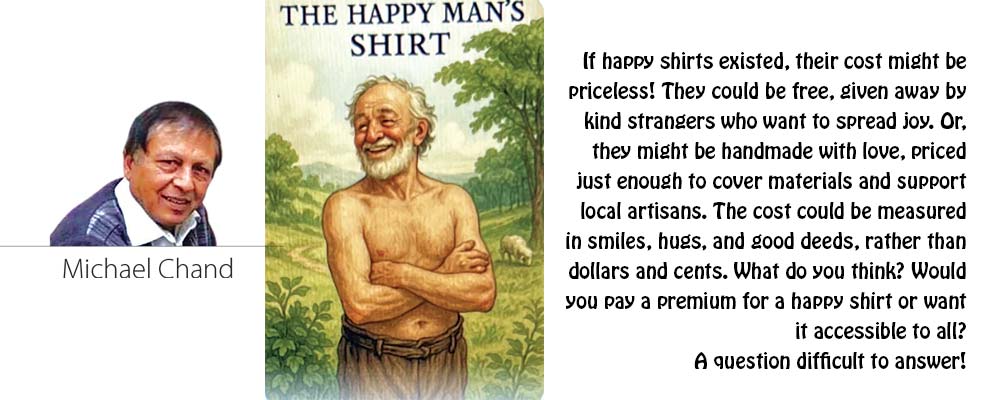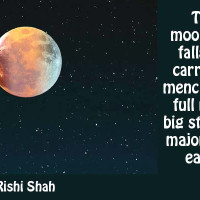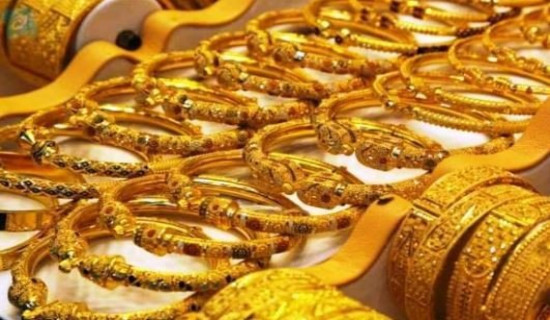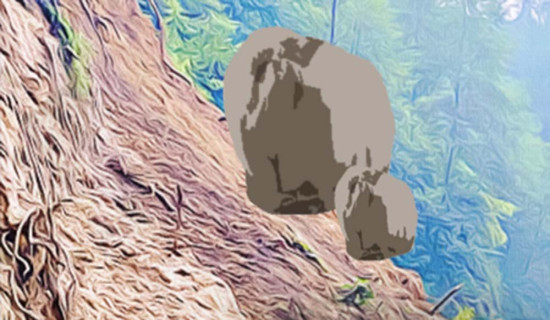- Friday, 8 August 2025
The Elusive Quest For Happiness
In a world where people tirelessly pursue external validation, happiness remains an enigma. The ancient tale of the "Happy Man's Shirt" offers a profound insight into the nature of true joy. A king, desperate to cure his son's sorrow, sets out to find a happy man's shirt, believing it to be the key to his son's happiness. However, his emissaries return empty-handed, having found no one truly content.
This timeless parable is a poignant reminder that happiness cannot be found in external possessions or solutions. Instead, it resides within. The shirt symbolises the external fixes we seek to alleviate our inner turmoil. The story implies that true happiness is an inside job, requiring self-awareness, introspection, and a willingness to look beyond the surface level.
The tale is deceptively simple yet deeply profound, offering relevant lessons in today's fast-paced, consumer-driven world. It reminds us that the truest riches are often invisible, and that happiness is not something we can buy or borrow. Instead, it is a state of being that arises from being true to oneself.
As we navigate life's complexities, we remember the wisdom of ancient philosophers, who emphasized the importance of inner contentment. In Chinese Philosopher Lao Tzu's words, "He who knows that enough is enough will always have enough," resonates deeply in this context. Similarly, Socrates' notion that "contentment is a natural wealth and luxury is artificial poverty" underscores the idea that true happiness lies within.
In a world bombarded with images of perfection and happiness, it's easy to get caught up in pursuing external validation. However, the tale of the "Happy Man's Shirt" encourages us to look inward, to stitch the fabric of our version of happiness, rather than seeking it in external sources.
As we reflect on this timeless parable, we're reminded that true happiness is not something we can find but cultivate. It's the culmination of self-awareness, acceptance, and a deep understanding of ourselves and the world around us.
Let's abandon the "Happy Man's Shirt" quest and focus on cultivating inner contentment. In doing so, we may discover we have everything we need to be truly happy.
The story of a rice farmer in Nepal illustrates this point. Despite having minimal possessions, the farmer finds joy in the simple things – the rain, the crops, and grandchildren. By all appearances, he's poor, but by emotional wealth, he's rich beyond measure.
The folklore choral text by Shirin Sabri beautifully captures the essence of the "Happy Man's Shirt."
"High on a hilltop, a proud castle stood
By shimmering lakes and the king's wood.
The king felt no joy, and the wise of the court
Said that its cure was a happy man's shirt.
The king went out to wander the land,
To find a happy man,
But every place he went, everyone wanted something, and none were content. None but a whistler roaming carefree,
Said the king, "Will you lend your shirt to me?"
The whistler laughed, happy to share.
But under his coat, his chest was bare!
The king laughed loudly, his heart serene,
With light steps, he set off home to his queen."
Here is a twist to the story!
If "The Happy Man's Shirt" were available globally, the world would see a surge in positivity and kindness. People might spread joy and warmth wherever they go, and the shirt could symbolize happiness and good vibes. It could unite people, fostering a sense of community and shared happiness.
The impact could extend beyond individuals, influencing societal norms and values. Governments and organizations might prioritize happiness and well-being in their policies and initiatives, recognizing the importance of mental health and positivity.
"The Happy Man's Shirt" could become a cultural phenomenon, with people sharing photos and stories on social media. It might inspire art, music, and literature, celebrating happiness and kindness.
Businesses might incorporate the shirt's message into their branding, promoting positivity and customer satisfaction. The shirt could become a
conversation starter in workplaces, schools, and public spaces, helping to break down barriers and build connections.
Let us take a cue from "The Happy Man's Shirt" and focus on cultivating inner happiness, rather than searching for it in external sources, for it will be like a "wild goose chase," and you will never get one. It is even impossible to find one.
It could be a metaphor for finding inner peace and joy. One day, someone could design a shirt that radiates positivity and warmth. Until then, we can spread happiness through small acts of kindness and genuine connections. Maybe "The Happy Man's Shirt" is already among us, worn by those who smile freely, listen deeply, and spread love. Let's focus on being the change we want to see; who knows, our shirts will become symbols of happiness!
Who knows, one day, happiness could be contagious, and we'll see a world full of happy people, each wearing their special shirt!
We radiate positivity when we cultivate inner peace, kindness, and gratitude. This shirt might symbolize the joy of simple things, meaningful connections, and living authentically.
Perhaps it's not something we find but create within ourselves. By embracing life's beauty and imperfections, we can wear our version of the happy man's shirt, inspiring others to do the same.
If happy shirts existed, their cost might be priceless! They could be free, given away by kind strangers who want to spread joy. Or, they might be handmade with love, priced just enough to cover materials and support local artisans. The cost could be measured in smiles, hugs, and good deeds, rather than dollars and cents. What do you think? Would you pay a premium for a happy shirt or want it accessible to all?
A question difficult to answer!
(The author is a retired broadcaster.)
















